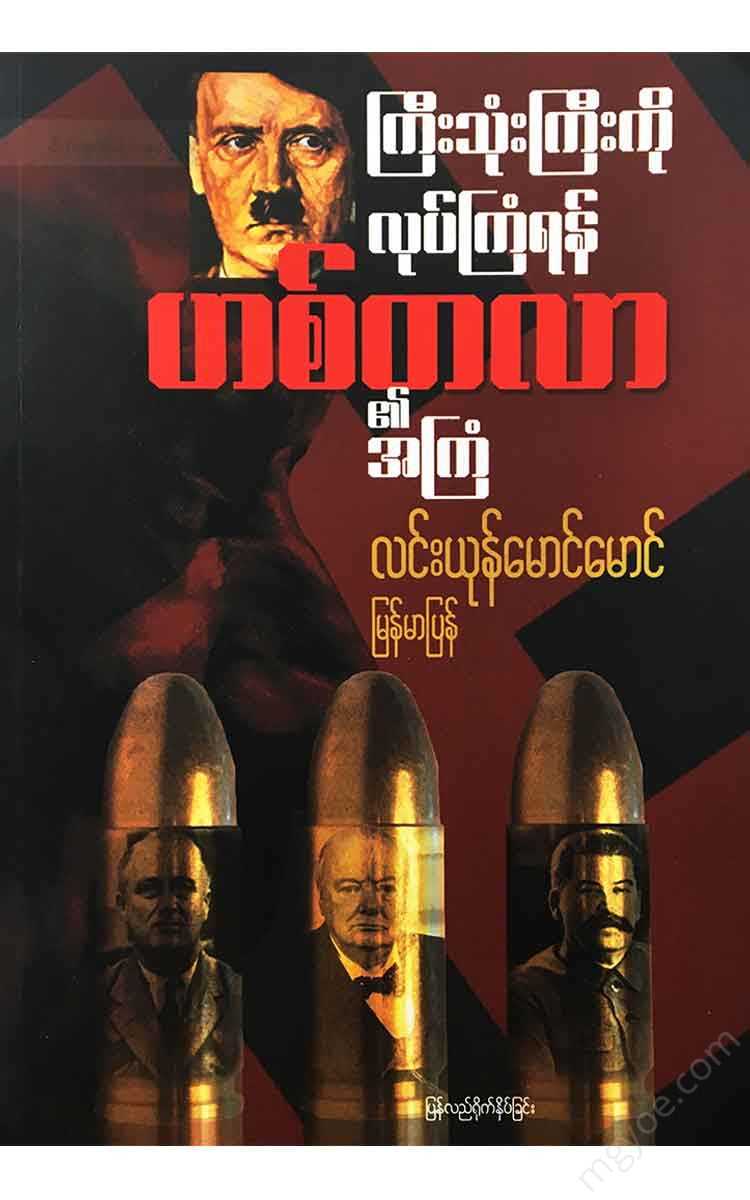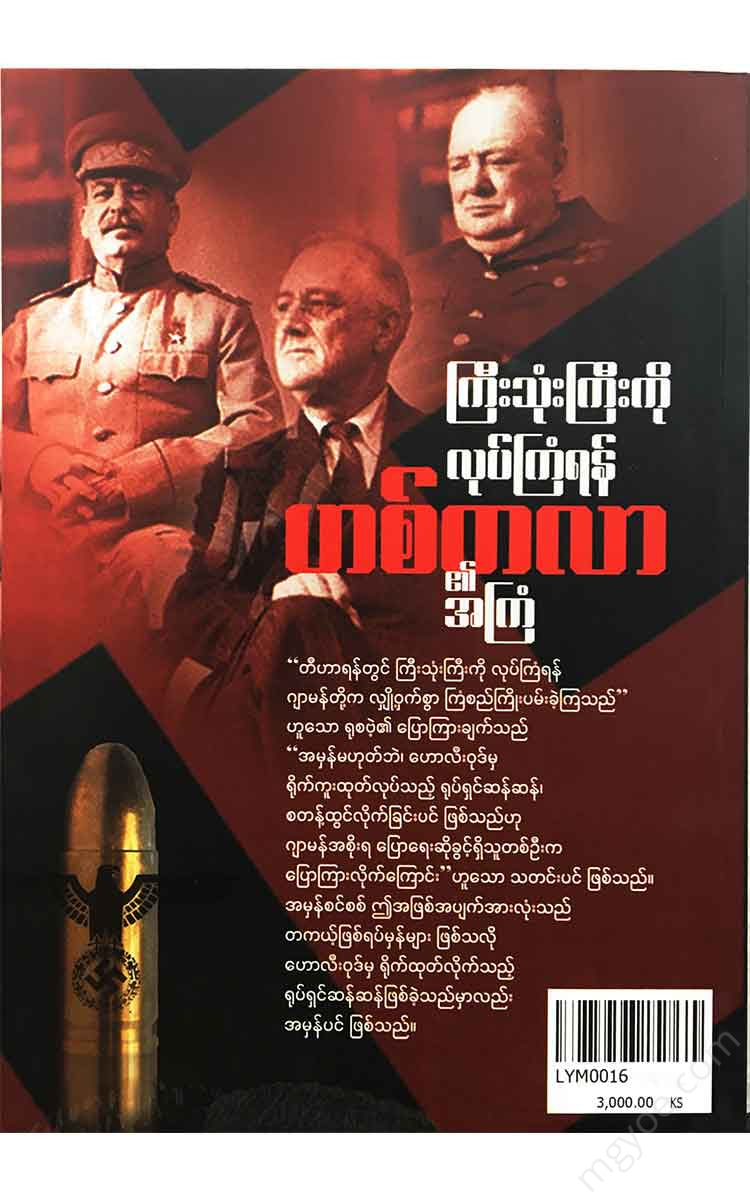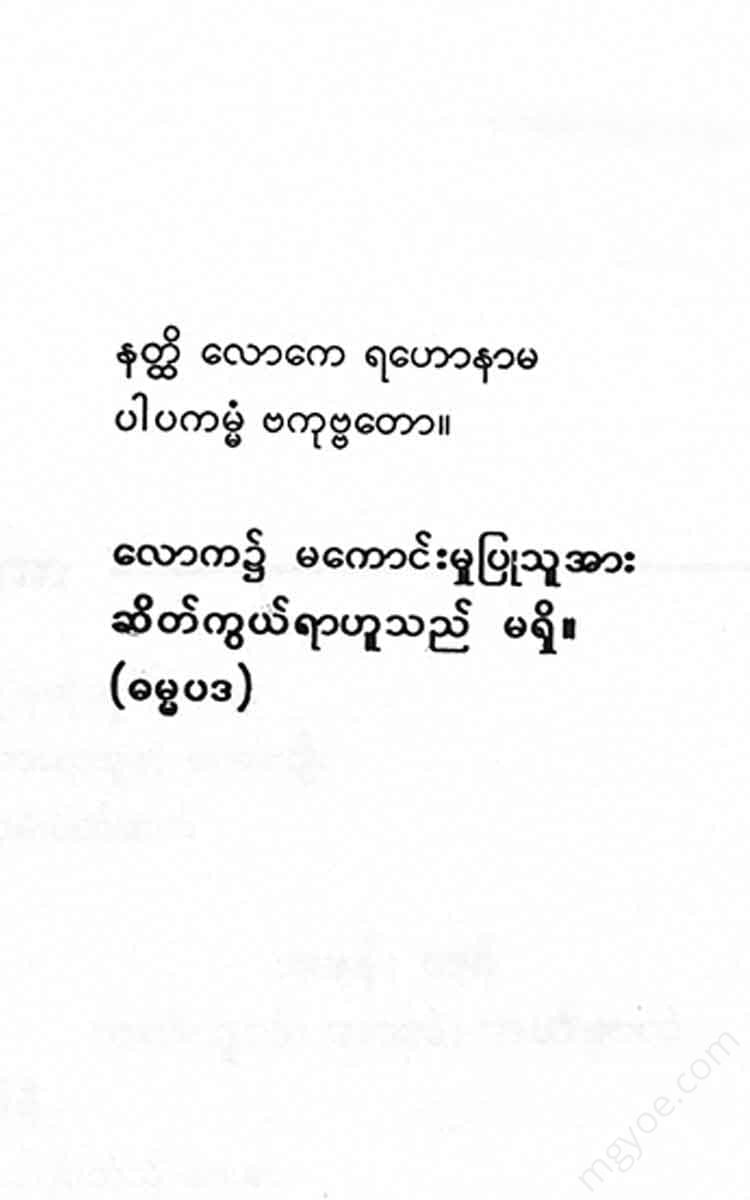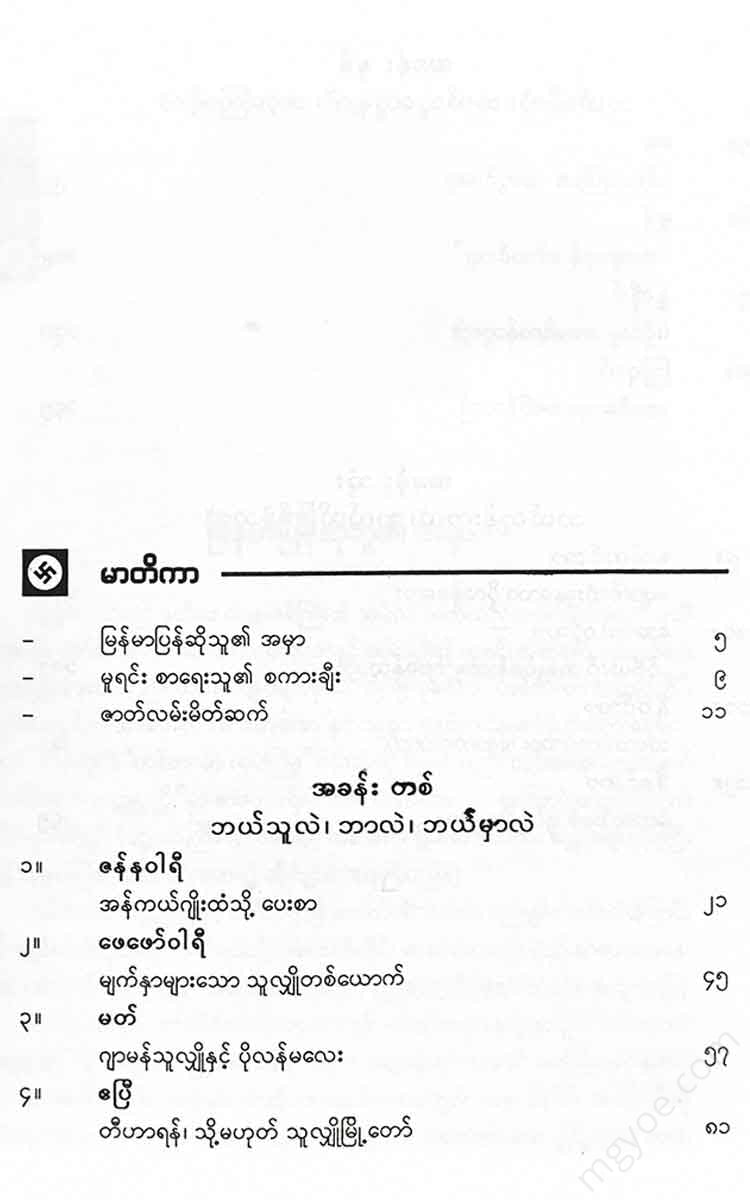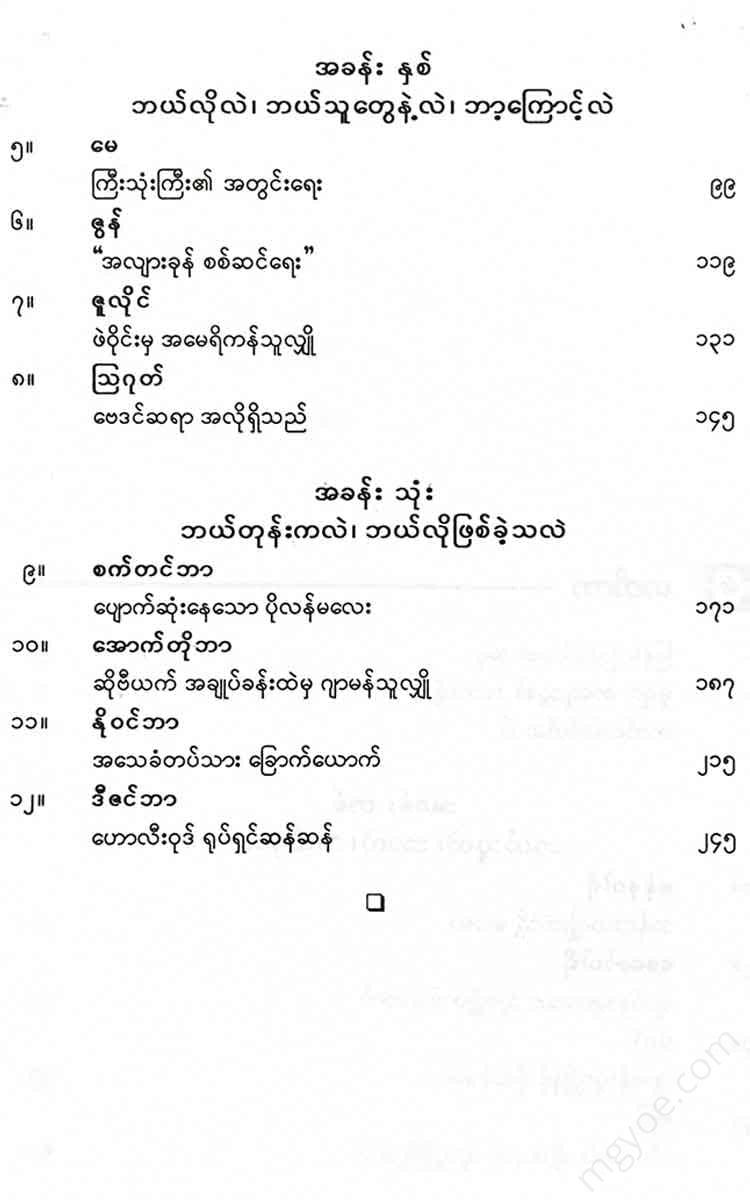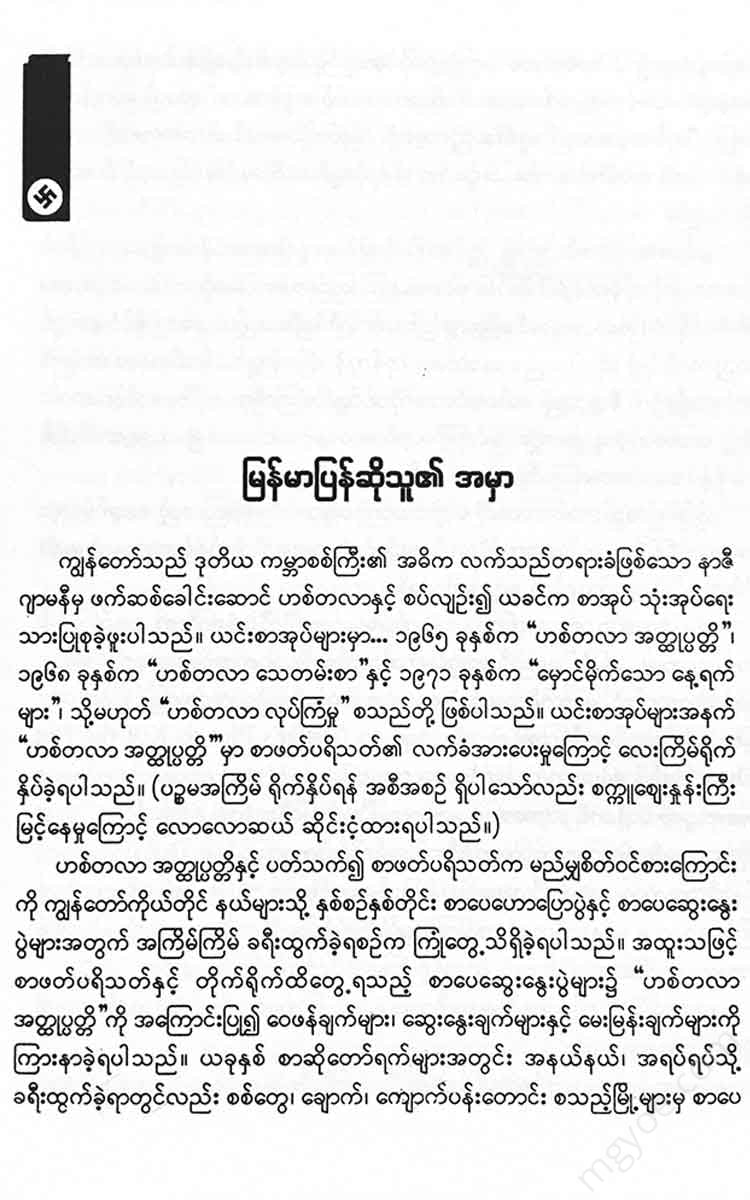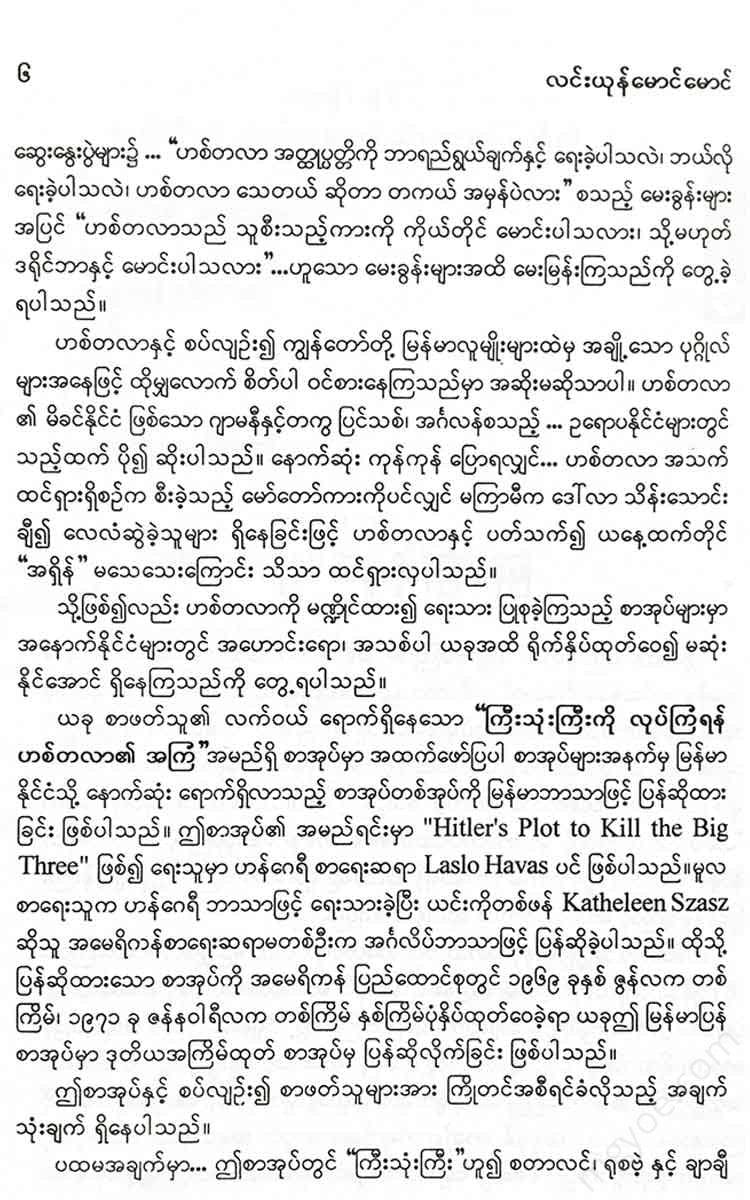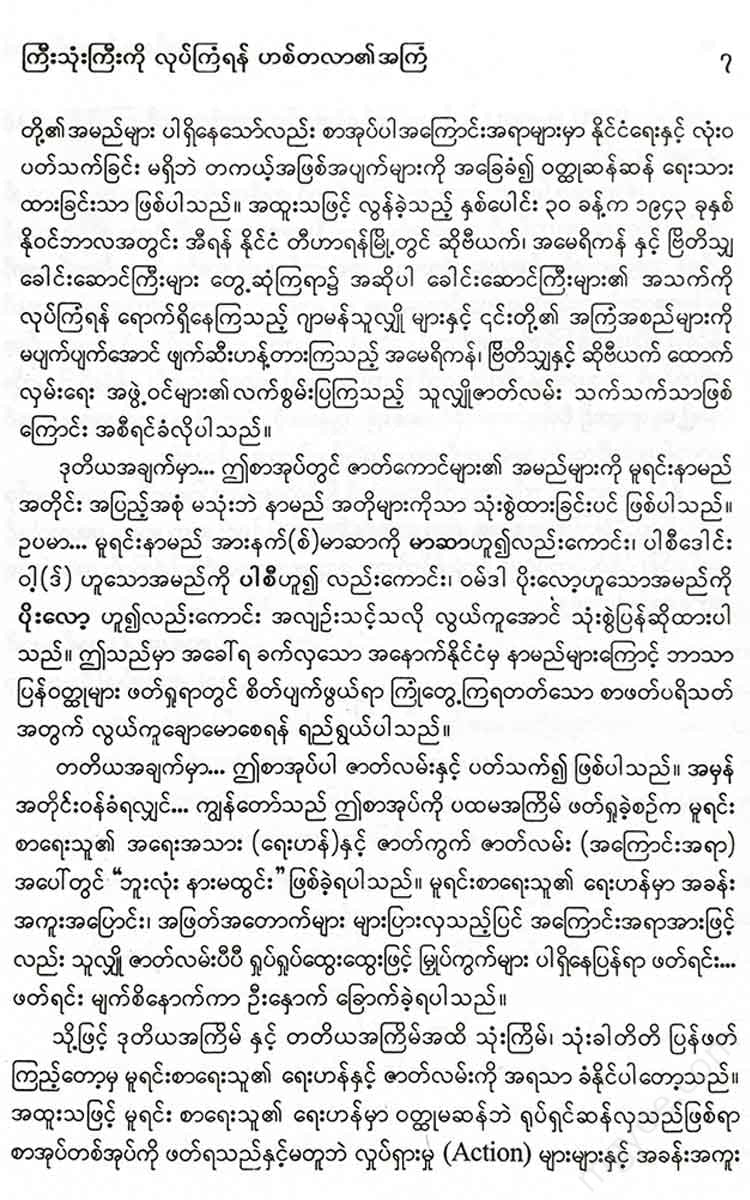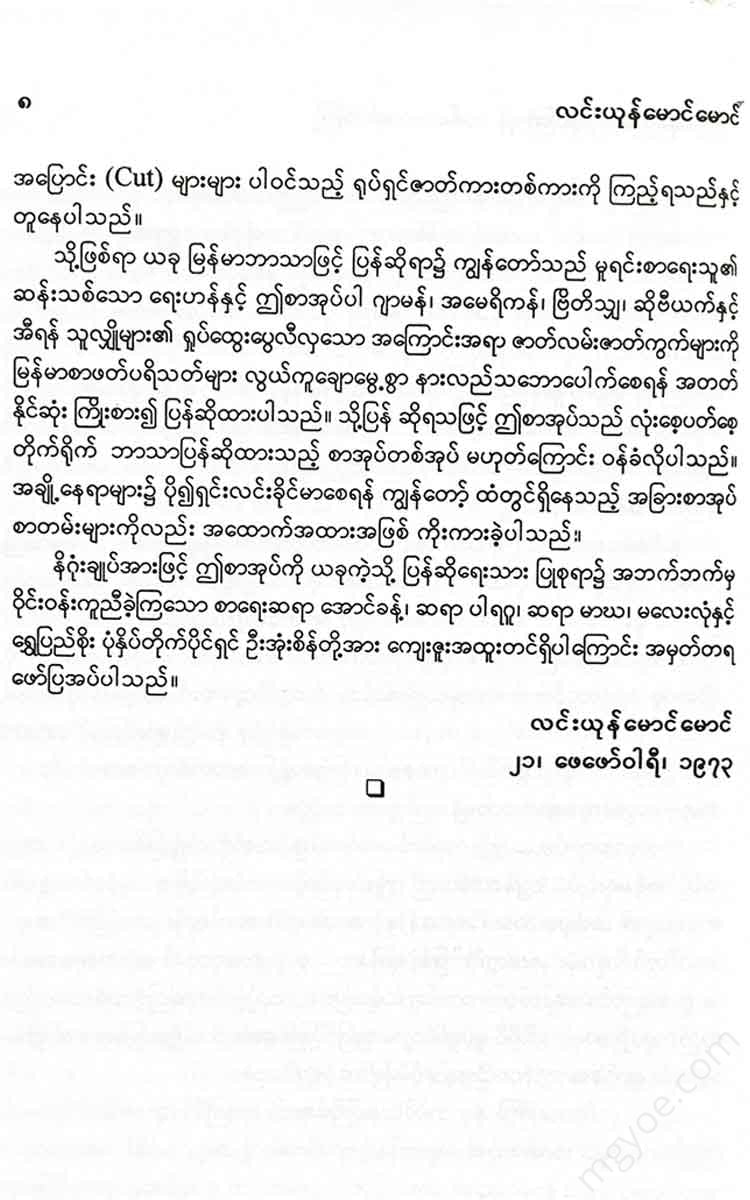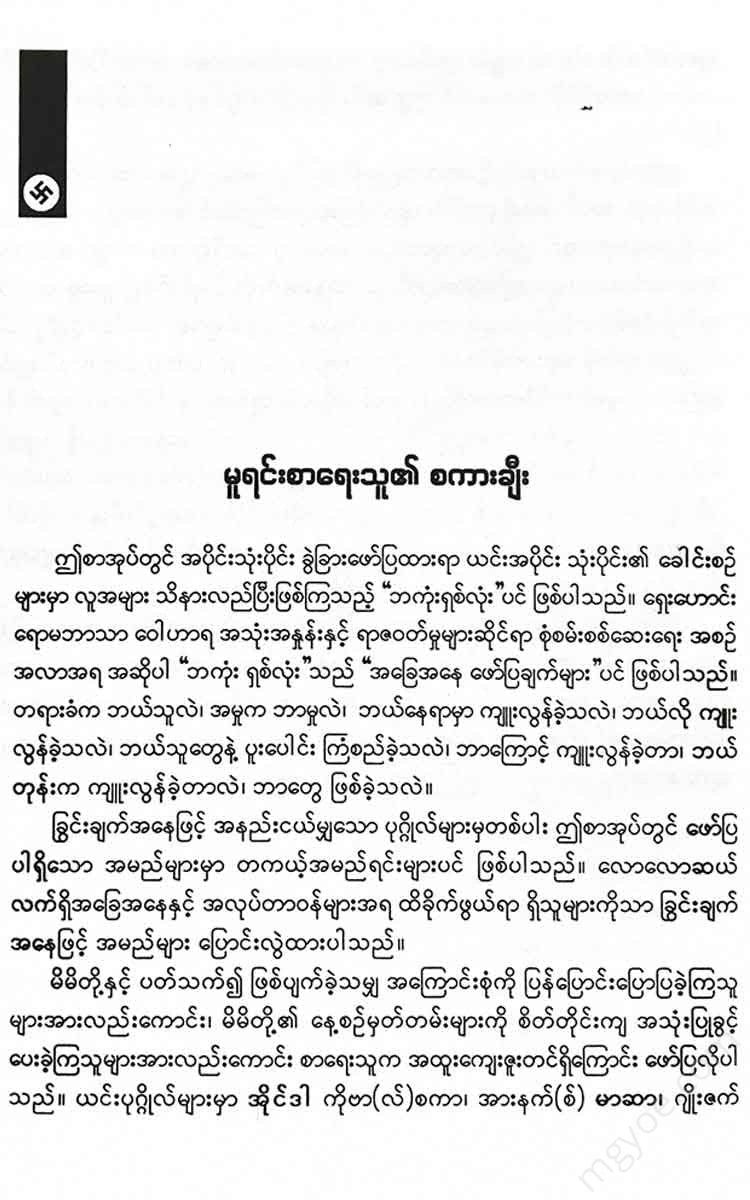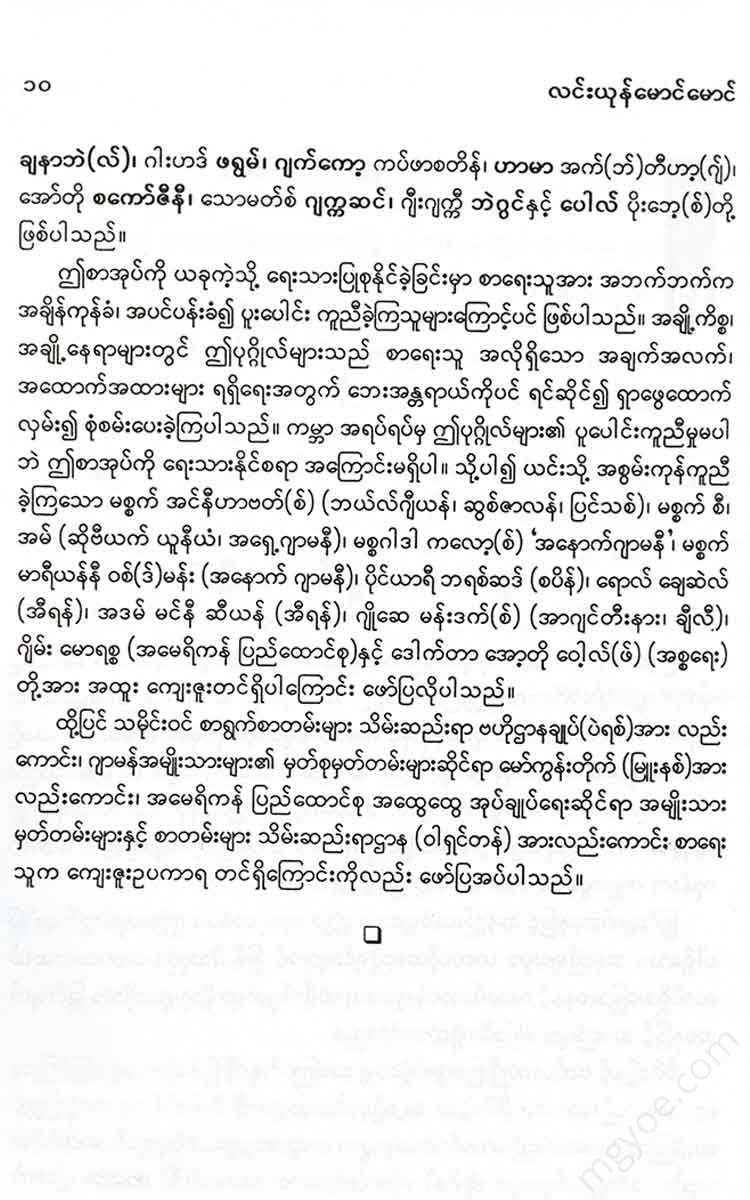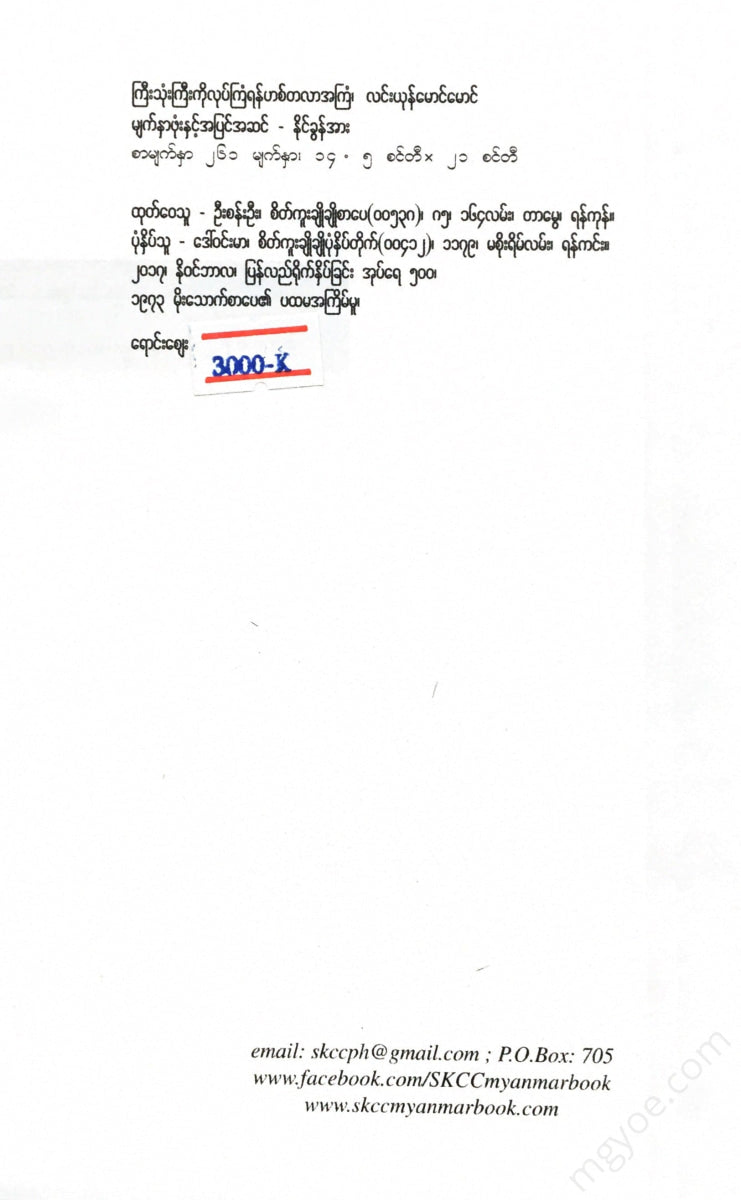စိတ်ကူးချိုချိုစာပေ
Eagle Maung Maung - Hitler's plan to assassinate the Big Three
Eagle Maung Maung - Hitler's plan to assassinate the Big Three
Couldn't load pickup availability
The Persians should have chosen to build their capital, Tehran, somewhere else from the beginning, not where it is now. This is because the current capital, Tehran, is very poor in terms of drinking and drinking water, and the climate is very bad.
Even though a spring has been diverted from a place about twenty miles away to the capital, the city is still facing a water shortage. The weather is so hot and muggy in the summer that the city dwellers often stay indoors during the day, staying in the shade. And when winter comes, it is so bitterly cold that they spend most of their time in the basements. For those who believe in statistics and figures, 50 percent of the population of the entire city is made up of vagrants, vagabonds, beggars, and criminals; 25 percent are merchants, clerks, and professionals; 20 percent are artists who work and earn a living by doing odd jobs; and only five percent are industrial workers. Of all the city's population, only these industrial workers were seen moving about, alert and hardworking.
But what is remarkable is that even in 1941-42, the number of literate ethnic groups remained surprisingly high. Unlike other large cities in Iran, half of the population of Tehran were literate.
Although the data are not related, the number of illiterates and the number of opium users are found to be in the same proportion here. One in two residents of Tehran is an opium user. In fact, 20 percent of the population of Iran earns its living by growing opium. Finally, Iran is a country that prides itself on the quality of its opium. The famous Chinese opium contains only 7 to 8 percent morphine, while Iranian opium contains 12 to 13 percent morphine. The quality is very high.
There was another source of pride for the people of Tehran. It was none other than the fact that advertisements and pamphlets distributed to tourists in 1941-42 stated that the houses in Tehran were “equipped with electric lights and there were many hotels and cafes with bands and sound films.” However, only the truly luxurious hotels had running water and heating systems, which provided easy access to water and heat.
The population of Tehran in 1943 is estimated to have been around seven hundred thousand.
This is just an estimate, as it is called, so if it is one or two hundred thousand more, it will be more. If it is one or two hundred thousand less, it will be less. However, everyone understands that it would be a waste of time to accurately count the population of the city. On that day, during those days, there were many strangers and unfamiliar faces in the city. Because of their coming and going, the population of the city was not stable and was constantly increasing and decreasing, so if it was an accurate census, it would be more work.
After August 1941, when the Russians occupied the north of Iran and the British occupied the south, Iranians were more tolerant of the influx of foreigners than ever before. In the streets and alleys of Tehran, no one paid any attention to the foreigners who spoke foreign languages, including English, French, Russian, Turkish, Polish, and so on.
The southern part of the city was inhabited by workers, beggars, artists, and assassins, and its streets were narrow and winding. The northern part was full of wide streets and alleys, lined with one- and two-story houses. The Russian soldiers, seeing these wide streets and alleys, imagined the Russian towns of the 19th century.
It is safe to say that all foreigners, both civilians and soldiers, brought the “new prices” with them to Tehran. In just two years, from 1941 to 1943, the price of general goods rose by 500 percent. The annual rent for an unfurnished building rose from $2,000 to $2,500. Butter cost four dollars a pound, and oranges were sold on the black market for 25 cents. A second-hand typewriter cost from $200 to $300, and a beat-up American automobile cost up to $10,000.
No one is suing anyone or filing a complaint, because they are all thieves.
Every government position has its “price.” Sometimes a ministerial position is more “pricey” than a used car. If you want to “buy” a policeman, you pay no more than you would pay to hire a wrestler or a hitman. Sometimes, the policeman even does the work of a wrestler or hitman while wearing a police uniform.
It was common for servants working in foreign homes as waiters, cooks, etc. to charge a 20% markup on everything they bought for their masters. Foreigners pretended not to know this and pretended not to see it. Thus, finding a good and honest servant became a “rare” for both foreigners and the ethnic elite. However, foreigners and the ethnic elites began to hire reliable Polish refugees as servants. At that time, the total number of Polish refugees who had immigrated to Iran from the Soviet Union was about 120,000, so the situation in Iran was further complicated by the large number of refugees.
Not only Poles, but also people from all over the world, are coming to Iran, especially to Tehran, in large numbers. Although these numbers are not large, no one can deny that the people from all over the world who come to Tehran come to live and work honestly. For example, how did a diamond cutter from Belgium come to Iran as a railway engineer? Why did a widow from Australia, who used to work as a cattle breeder, come to Tehran to make a living as a prostitute? A Finnish chemist and a Los Angeles lawyer are investigating why Iran is so heavily involved in opium trafficking... but no one can explain it.
In the areas occupied by the British and Soviets, the respective occupation forces had issued martial law orders that no one was allowed to leave their homes after 10 p.m. The Iranian police were responsible for monitoring and checking whether the residents of the cities and villages strictly adhered to this “curfew order.” If they wanted to travel for urgent matters after 10 p.m., they had to ask for permission from the relevant police department. However, for these permission certificates, the Iranian police officers took bribes at the highest rates and continued to do business.
Meanwhile, thirty thousand more American troops arrived to reinforce the British and Soviet forces, guarding the route from Iran to the Soviet border. Here, an Allied headquarters was being established in the Persian Gulf. As one ethnic Iranian put it, “The job of these Allied forces is… drinking, fighting, running over children with cars, and abusing beautiful Iranian women… that’s it.”
The Iranians bitterly hated the British because they feared that Iran would lose its independence due to British imperialism. They hated the Soviets because the Soviet Union's territories, such as Armenia, Georgia, and others, had expanded into Iranian territory.
Until 1943, Tehran was officially a neutral city. British troops had entered Tehran once, but only briefly, to suppress hunger strikes in the city. British and American troops then took over, along with the Tehran police, to maintain law and order in the city.
Colonel Stevens of the American army served as an advisor to the Tehran police. Colonel Norman, who became famous after capturing the kidnappers of the world-famous pilot Charles Lindbergh, also served as a leader in the reorganization of the Iranian police. However, both of them are like people who are walking in the dark. Breaking the law, taking bribes, looting, making a living from bad jobs, trafficking in drugs such as opium and marijuana, and smuggling drugs and illegal business... The evil and wicked activities are so abundant that it is frightening.
Iranians who are sincerely concerned about the future of their country, and foreigners who have grown accustomed to the chaotic anarchy, are resigned to the fate of the capital, Tehran. Until the end of this Second World War, the city of Tehran has been hopelessly trapped in a vicious cycle of crime and hunger, with no way out, no escape. They have come to believe in their hearts that nothing more extraordinary can happen in this city. Because everything that could have happened has already happened.
Thus, in 1943, the fourth year of World War II, the city of Tehran suddenly and unexpectedly caught the world's attention. In many countries, people who had never heard of the name Tehran before began to talk about it.
At this time, hundreds of foreigners were arriving in Tehran. People like British Prime Minister Winston Churchill and his bodyguard Detective Chief Inspector Thomason, women like Polish ex-student Wanda Pollock and linguist Ida Kowalska, American President Franklin D. Roosevelt and writer Peter Ferguson, German lawyer Oberth and boxer Lothar, and Soviet President Joseph Stalin and Chief of Police Bartinsky were all arriving in Tehran.
Among these newcomers and strangers, some come to meet each other, some to commit murder, and some to prevent the murder.
Whether they have never seen each other before, or have seen each other, whether or not the other person is aware of each other's existence, the fates of all these individuals are intertwined, each one dependent on the other.












